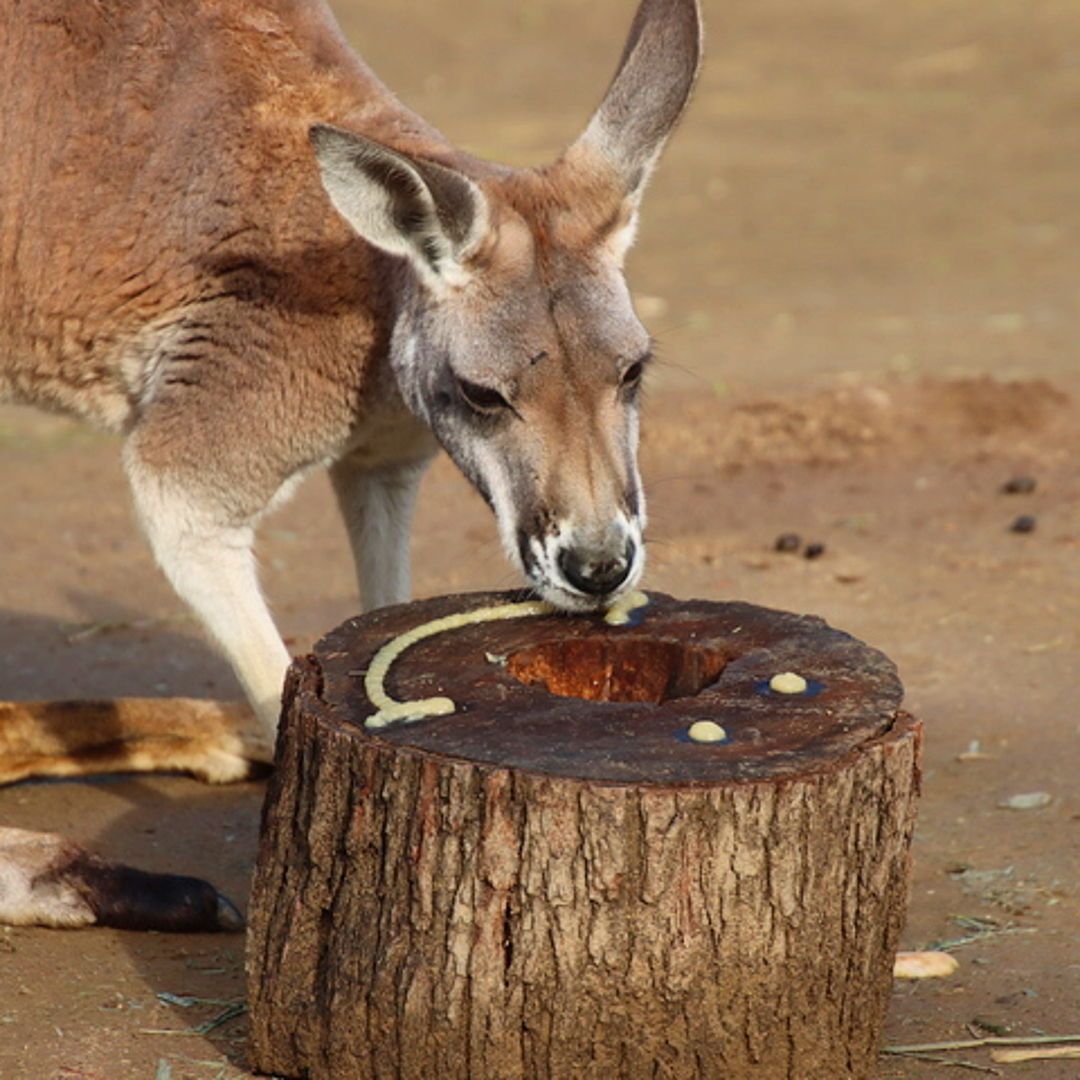- The role of enrichment in zoo animal welfare and its impact on species like kangaroos.
- The value of visitor engagement programs at zoos, focusing on individual animals like Cheddar the kangaroo.
- The significance of educational experiences for visitors in promoting wildlife conservation.
- The challenges and strategies involved in zoo management and animal care.
- The importance of zoos in conservation efforts and their role in supporting biodiversity.
Enrichment is pivotal in maintaining the health and welfare of animals in zoos. For social and active species such as kangaroos, enrichment involves providing stimuli that evoke natural behaviors and keep their minds sharp. Cheddar the kangaroo, finding joy in his applesauce smear enrichment, is a testament to how targeted activities can improve an animal’s life in captivity. This approach aims to simulate the challenges an animal would encounter in the wild. Not only does enrichment mitigate the monotony of zoo life, but it also addresses physical health and psychological well-being.
Kangaroos, native to Australia, are known for their agility and robust physicality. They thrive on activities that challenge their physical capabilities and mental faculties. Enrichment practices cater to these needs by introducing novel stimuli into their environment. For Cheddar, the simple act of interacting with applesauce smeared onto surfaces encourages exploration and problem-solving – a practice essential for mental health. Enrichment is a driving force behind successfully maintaining the natural instincts and happiness of zoo animals, showcasing its critical role in animal welfare.
Visitor engagement is a cornerstone of modern zoos, enhancing the experience of human attendees while promoting empathy and understanding of diverse species. Programs that highlight individual animals, like Cheddar the kangaroo, connect visitors to the uniqueness of each species, fostering a deeper appreciation of wildlife. Children and adults alike are often enthralled by such encounters, which encourage learning through observation and participation. This form of engagement serves both educational and emotional purposes, creating lasting memories and instilling an interest in wildlife conservation.
Cheddar’s love for his applesauce enrichment is more than just adorable – it’s an educational tool for visitors. By witnessing firsthand the positive effects of enrichment, guests gain insight into the challenges animals face in captivity and the efforts made to replicate natural experiences. Such interactions also serve to educate the public about the species’ native behaviors and survival needs. This knowledge can inspire visitors to support conservation initiatives and adopt behaviors conducive to environmental stewardship. Information-rich experiences at zoos contribute significantly to raising public awareness and advocating for endangered species.
Managing a zoo involves a complex interplay of responsibility towards animal care, conservation efforts, and visitor education. Each animal has specific requirements which can be challenging to meet within a curated zoological setting. This is especially true for diverse species like kangaroos, which require large spaces and opportunities for social interaction. Caretakers must carefully design habitats and schedules that suit the unique morphologies and behaviors of varied species, ensuring the health and longevity of the animals.
To foster environments that simulate natural habitats, zoo managers must consider numerous factors including species-specific dietary needs, social structures, and breeding programs. The task of providing such comprehensive care requires collaboration between veterinarians, nutritionists, and behavioral specialists. Strategies such as regular staff training, enriching habitats, and monitoring animal health help maintain optimal living conditions. Effective zoo management also involves engaging with global conservation networks and research institutions to support breeding programs and safeguard endangered species.
Zoos play a vital role in global biodiversity conservation. Through captive breeding programs and educational initiatives, they serve as bastions for species threatened by habitat loss and climate change. Efforts to conserve biodiversity involve habitat preservation, species reintroduction programs, and public education to reduce ecological footprints. The Sacramento Zoo, like many others, contributes to these efforts by housing species such as kangaroos, which provide unique insights into animal behavior and conservation needs.
By providing refuge and raising awareness, zoos strive to combat the prevailing threats animals face in the wild. The importance of zoos goes beyond merely housing animals. They represent a bridge between the public and wildlife, fostering a mutual understanding that empowers visitors to act in favor of environmental protection. As visitors engage with animals like Cheddar, they become ambassadors for conservation, supporting initiatives that protect wildlife for future generations. Through their multidimensional role, zoos uphold a future where biodiversity can thrive.
The story of Cheddar the kangaroo loving his applesauce smear is not just a tale of endearing cuteness. It represents a network of educational and conservation efforts that highlight why zoos remain crucial in contemporary society. As we smile at Cheddar’s enjoyment, we are reminded of the intertwined destinies of all living creatures and the responsibility we share to protect this delicate balance for years to come.
*****
Source Description
Finishing out the month of March with a smile! Cheddar the kangaroo absolutely loves his applesauce smear enrichment 🍎 You never know what cuteness you’ll stumble upon during a visit to the Sacramento Zoo!


